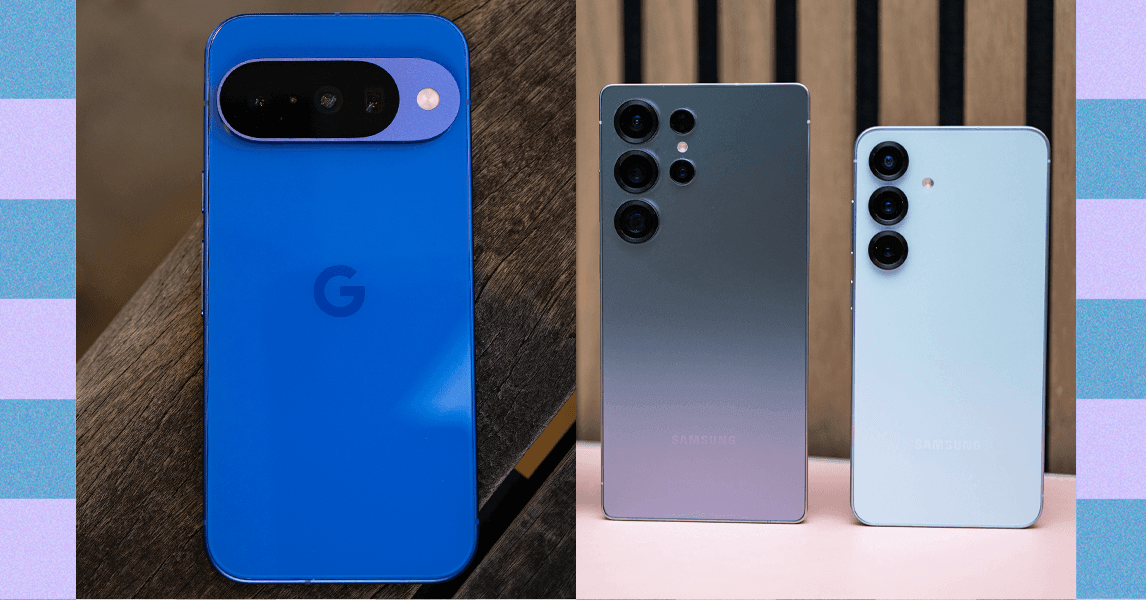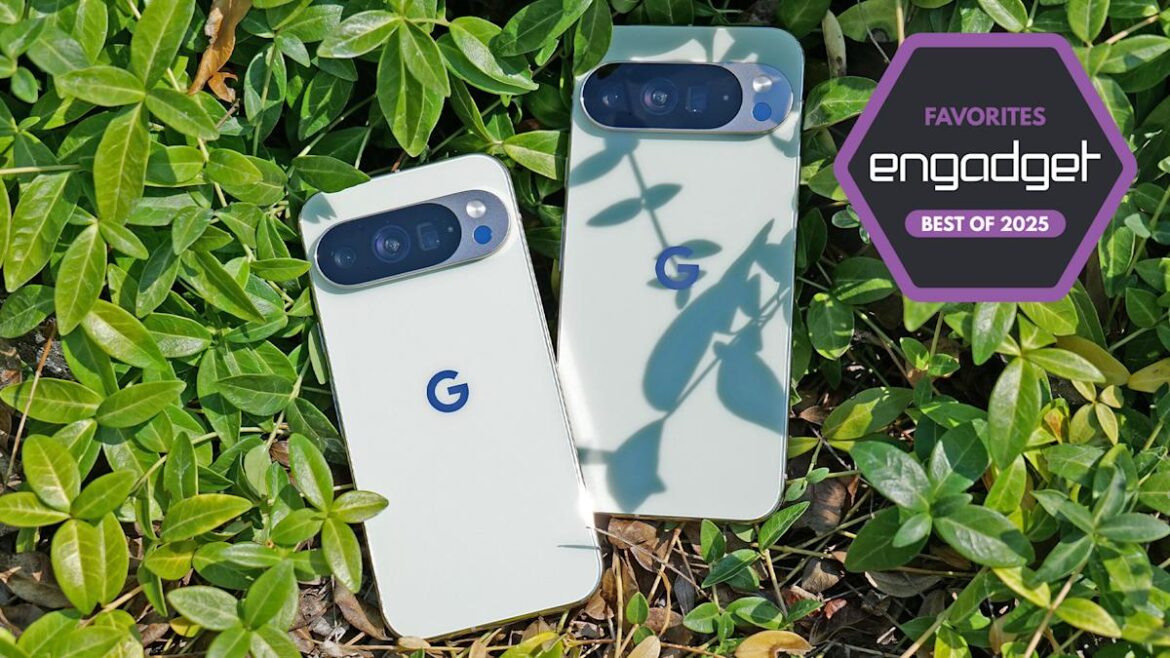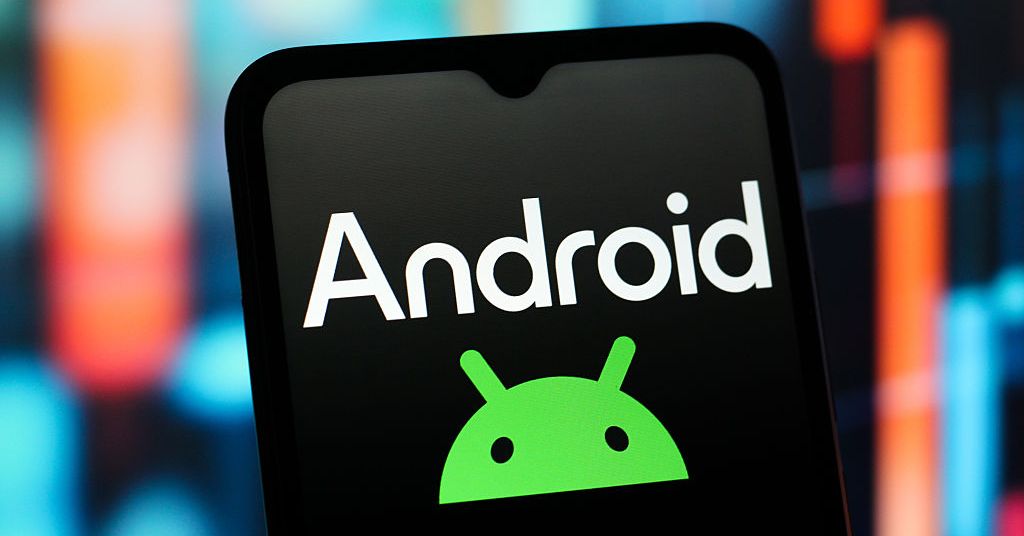Other Phones to Consider
We test a ton of Android phones. We like the ones below, but you’ll be better off with one of the options above. If you haven’t yet done so, check out our Best Cheap Phones and Best Folding Phones guides for more.
Google Pixel 9 series
Photograph: Julian Chokkattu
Google Pixel 9 series for $599+: The Pixel 9 series (9/10, WIRED Recommends) from 2024 is still a great buy if you can find them on sale. The Pixel 9 is similar to the Pixel 9a but with better build quality and larger camera sensors. The Pixel 9 Pro and Pixel 9 Pro XL have the 5X optical camera and the vapor chamber cooling, among other perks. The key is to make sure you avoid paying MSRP. These have dipped fairly often in price during sale events, and now, as stock gets cleared, you can probably find a killer deal if you hold out.
Samsung Galaxy Z Flip7 for $1,100: Samsung’s Galaxy Z Flip7 (7/10, WIRED Recommends) got some great upgrades over its predecessor, but it wasn’t enough to dethrone the Razr Ultra 2025 as my top flip phone pick. Still, it’s worth considering if you’re shopping for a folding phone of this category, because the cameras are solid, the displays are excellent and larger than ever, and the cover screen is a little more useful (though not as versatile as on Motorola’s phone). Battery life is even worse here over the Fold7, so snag a power bank while you’re at it.
Galaxy S25 Edge
Photograph: Julian Chokkattu
Samsung Galaxy S25 Edge for $950: Samsung’s latest innovation is to slim down the smartphone to an amazingly thin 5.8 mm. That’s not as impressive as phones from the past, but the Galaxy S25 Edge (6/10, WIRED Recommends) is still impressive when you hold this lightweight 6.7-inch phone in your hand. It maintains several features from the Galaxy S25 Ultra, except there’s no S Pen stylus, no telephoto cameras whatsoever, and battery life is not good at all for a phone of this size and price. I routinely had to keep it topped up throughout the day. But if you’re an average to light user, you may find it sufficient, and maybe you’ll be able to appreciate the thin and light size even more.
Photograph: Julian Chokkattu
Nothing Phone (3a) for $379 and Phone (3a) Pro for $459: Here’s another well-rounded smartphone that doesn’t have an exorbitant price. The Nothing Phone (3a) and Phone (3a) Pro (8/10, WIRED Recommends) are sub-$500 Android phones, and they are both fantastic. They’re identical in every way except the cameras, where the Pro model has a slight advantage in zoom and low-light capabilities. I think the Phone (3a) looks nicer and is a better value. Run through the list of specs and you’ll be hard-pressed to find fault with the hardware. The display is wonderfully smooth with its 120-Hz refresh rate, and it’s no struggle to see in the sun. Performance is snappy, battery life is reliable, and the camera quality is decent for the money. There are some drawbacks—these phones are only IP64-rated, so don’t drop them in the pool. There’s no wireless charging, and connectivity isn’t seamless. While it’ll work best on T-Mobile, you’ll only get 4G on Verizon and AT&T until you ask the carriers to whitelist the device for 5G access. That process is sure to be frustrating.
Samsung Galaxy S24 FE for $650: Samsung’s Galaxy S24 FE is a better buy now that the flagship Galaxy S24 series is harder to find for sale. It’s a perfectly capable smartphone with a triple-camera array (including a 3X telephoto camera), and it delivers good performance. It has wireless charging, is IP68 water resistant, and has solid day-long battery life. It’s a shame the design’s a bit drab. It’s worth pointing out that we’re coming up on a year since the S24 FE launched, so expect an S25 FE real soon.
Moto G Power 2025
Photograph: Julian Chokkattu
Motorola Moto G Power 2025 for $300: The new Moto G Power (7/10, WIRED Recommends) isn’t as great as its predecessor, and that comes down to one reason: Due to a lesser chipset, there’s a slight hit in performance, and it feels a bit more sluggish to use. However, the performance is good enough that you won’t feel frustrated. Outside of this, it’s a remarkable $300 phone. The green faux leather back exudes luxury, and it’s nice and slim. The cameras are solid, and the 6.8-inch LCD screen has a 120-Hz screen refresh rate and gets plenty bright. Best of all, the company retained the wireless charging it debuted in last year’s model, making it one of the only sub-$300 phones with this convenience. Another area of improvement? It’s IP68/69-rated, so you won’t have to baby this phone near a pool; it can handle a dip just fine. Motorola has also extended software updates on the Moto G series, promising two Android OS upgrades, with the same three years of security updates. There’s a fair amount of bloatware, but you can remove most of these preinstalled apps.
Minimal Phone
Photograph: Julian Chokkattu
Minimal Phone for $399: Having trouble curbing your screen time? Instead of going cold turkey with something like the Light Phone III, try the Minimal Phone (6/10, WIRED Review). This is an e-paper Android phone with a physical keyboard. The goal is to let you access the usual Android apps, but because the screen is ill-suited to videos and most social media, you’ll naturally be able to avoid those distractions. It’s successful in this task, but the constant screen ghosting and plasticky build dampen the experience.
Mobile Accessories You Might Need
Photograph: Julian Chokkattu
We have case recommendations for a few popular devices, like Samsung’s Galaxy S25, Galaxy S24, and Galaxy S23, or Google’s Pixel 9 series. It’s smart to slap a case on these glass sandwiches and even a screen protector to keep the display free of scuffs and scratches. Here are a few other noteworthy accessories, including charging adapters, which many phones don’t include anymore. Read our Best USB-C Cables guide for other recommendations.
Anker 45-Watt Charger for $28: This tiny charger will be enough for most people to charge most smartphones. It’s compact, reliable, and cheap, plus the prongs fold up. More smartphones than ever can go up to 45-watt charging speeds, so take advantage with a 45-watt charger.
Photograph: Julian Chokkattu
Counterpart Retractable The Charger for $44: It’s not the best value, but this design-forward charger has a retractable 4-foot cable that makes it a fantastic two-in-one—no need to pack a separate charger and cable! It outputs 35 watts, which is plenty to fast-charge most phones and tablets, and the prongs fold in for travel.
Peak Design Samsung and Pixel Everyday Case for $50: If you have a Samsung or Pixel phone and you frequently mount your phone to a bike or scooter, you owe it to yourself to snag this case and Peak Design’s bike mount. The case snaps perfectly into the mount, is dead simple to release, and has yet to fall off after years of riding. Peak Design also sells several other accessories you can attach to the back of these cases, bringing Android into Apple’s MagSafe ecosystem.
Nimble Champ Portable Charger 10,000 mAh for $60: This portable battery is small enough to leave in a bag but has enough power to fully recharge your phone once or twice. There’s a USB-C and USB-A port; it delivers 18 watts of power, so it can recharge your tablet or phone, and it’s housed in 73 percent post-consumer plastic with plastic-free packaging.
Nomad ChargeKey V2 for $29: When your phone dies, it’s almost always when you forget to bring a charger or battery pack. The ChargeKey is a nifty solution—it’s like clipping a tiny USB-C charging cable to your keychain. Just plug one end into your phone and the other into any kind of power source (a friend’s phone or a charging adapter if you manage to find one), and you can top up your phone. Native Union also has a similar item that’s cuter but nearly as capable.
Choose a Wireless Charger: Our guide to the best wireless chargers includes dozens of models in varying colors, shapes, and materials, and even some designed for specific phones. Not every Android phone supports wireless charging, but it’s a luxury you’ll want to take advantage of. Take a gander at our guide for our favorites.
Power up with unlimited access to WIRED. Get best-in-class reporting and exclusive subscriber content that’s too important to ignore. Subscribe Today.






